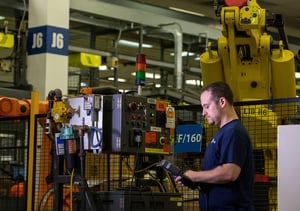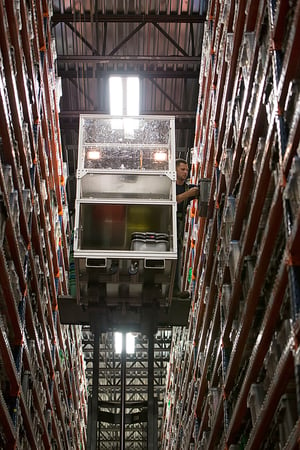A sound maintenance plan is key to keeping a factory up and running, as it helps ensure both maximum productivity and minimal downtime. While there are several ways to approach the development of a maintenance plan, the following guidelines are applicable across the board for a wide range of factory types.
 Get organized
Get organized
Few factory processes cannot be improved by better organization. Whether the facility is staffed by human workers or robots (or, more likely, some combination of the two), there are some basic organizational guidelines that will help to ensure a smooth workflow. These include:
- Well-defined work areas
- Clearly defined floor paths for moving materials through each manufacturing step
- Tools and equipment placed to minimize the number of separate steps needed
- Scheduled deep cleanings, plus regular cleanings in between
- Localized administrative overview of all processes
Be safe
There is an old saying: “’Safety first’ died after ‘hurry up’ was born.” Nowhere is the wisdom contained therein more relevant than in a factory setting, where equipment and processes are rife with potential dangers. Some steps to ensure safety include:
- Clear labeling of all safety hazards
- Signage indicating clearance heights, capacity limits and the like
- Personal protective equipment (PPE) stocked and maintained
- Well-defined emergency procedures, practiced through drills and simulations
- Compliance with all applicable workplace regulations
 Stop trouble before it starts
Stop trouble before it starts
There is another saying about an ounce of prevention being worth a pound of cure. While preventive maintenance involves an investment of time and other resources, it is almost always a far less pricy proposition than damage control. Measures of preventive maintenance include:
- Up-to-date machine maintenance logs
- Periodic machine inspections
- Analysis of past breakdown data and downtime costs
- Cost-efficient deployment of maintenance teams: Consider making use of in-house personnel for minor repairs, outsourcing for larger issues
- Ready access to repair supplies, replacement parts and the like
Adjust as needed
Times change, and procedures must change along with them. Factories are increasingly characterized by automation, workflow decisions made by artificial intelligence and other aspects of what is commonly referred to as Industry 4.0. Addressing today’s needs with yesterday’s tools is inefficient at best, not to mention hazardous. Ways to stay current include:
- Periodic review of operations, targeting inefficiencies
- Regular attendance at conferences and trade shows to learn about new options for process improvements
- Updates to cost analyses in light of available new technologies
- Employment of trusted third-party experts who can pinpoint areas for improvement
There are many aspects to crafting a sound maintenance plan. Bringing all the necessary elements together, however, practically guarantees a yield of significant dividends. A well-run factory, moreover, is a reflection of a well-run company — one that values the very principles that go into the making of a solid plan: organization, safety, forward thinking and a willingness to never stop learning from experience.
For more tips about creating a sound maintenance plan, contact Radwell International.
To learn more about Radwell

